Black And Decker BDPHS180G Handleiding
Black And Decker
Zaagmachine
BDPHS180G
Bekijk gratis de handleiding van Black And Decker BDPHS180G (5 pagina’s), behorend tot de categorie Zaagmachine. Deze gids werd als nuttig beoordeeld door 36 mensen en kreeg gemiddeld 4.9 sterren uit 18.5 reviews. Heb je een vraag over Black And Decker BDPHS180G of wil je andere gebruikers van dit product iets vragen? Stel een vraag
Pagina 1/5

• Maintain tools with care. Keep cutting tools sharp and clean. Properly maintained
tools, with sharp cutting edge are less likely to bind and are easier to control.
• Check for misalignment or binding of moving parts, breakage of parts, and any other
condition that may affect the tool’s operation. If damaged, have the tool serviced
before using. Many accidents are caused by poorly maintained tools.
• Use only accessories that are recommended by the manufacturer for your model.
Accessories that may be suitable for one tool may create a risk of injury when used on
another tool.
Service
• Tool service must be performed only by qualified repair personnel. Service or
maintenance performed by unqualified personnel may result in a risk of injury.
• When servicing a tool, use only identical replacement parts. Follow instructions in
the Maintenance section of this manual. Use of unauthorized parts or failure to follow
Maintenance Instructions may create a risk of shock or injury.
Specific Safety Rules
• Hold tool by insulated gripping surfaces when performing an operation where the
cutting tool may contact hidden wiring or its own cord. Contact with a "live" wire will
also make exposed metal parts of the tool "live" and shock the operator.
• When working on a ladder or on scaffolding be sure to lay the tool down on its side
when not in use. Some tools with large battery packs will stand upright but may be easily
knocked over.
WARNING: Some dust created by power sanding, sawing, grinding, drilling, and
other construction activities contains chemicals known to cause cancer, birth
defects or other reproductive harm. Some examples of these chemicals are:
• lead from lead-based paints,
• crystalline silica from bricks and cement and other masonry products, and
• arsenic and chromium from chemically-treated lumber (CCA).
Your risk from these exposures varies, depending on how often you do this type of work. To
reduce your exposure to these chemicals: work in a well ventilated area, and work with
approved safety equipment, such as those dust masks that are specially designed to filter
out microscopic particles.
•Avoid prolonged contact with dust from power sanding, sawing, grinding, drilling,
and other construction activities. Wear protective clothing and wash exposed areas
with soap and water. Allowing dust to get into your mouth, eyes, or lay on the skin may
promote absorption of harmful chemicals.
WARNING: Use of this tool can generate and/or disperse dust, which may cause
serious and permanent respiratory or other injury. Always use NIOSH/OSHA
approved respiratory protection appropriate for the dust exposure. Direct particles away
from face and body.
CAUTION: Wear appropriate hearing protection during use. Under some conditions
and duration of use, noise from this product may contribute to hearing loss.
• Do not operate this tool for long periods of time. Vibration caused by the operating
action of this tool may cause permanent injury to fingers, hands, and arms. Use gloves to
provide extra cushion, take frequent rest periods, and limit daily time of use.
The label on your tool may include the following symbols.
V ..........................volts A..........................amperes
Hz ........................hertz W ........................watts
min ........................minutes ......................alternating current
......................direct current no ........................no load speed
..........................Class II Construction ........................earthing terminal
........................safety alert symbol .../min ..................revolutions or
reciprocations
per minute
Battery Cap Information
Battery storage and carrying caps are
provided for use whenever the battery
is out of the tool or charger.
Remove cap before placing
battery in charger or tool.
WARNING! Do not store or carry battery so that metal objects can contact exposed
battery terminals. For example, do not place battery in aprons, pockets, tool boxes, product
kit boxes, drawers, etc. with loose nails, screws, keys, etc. without battery cap. Without cap
in place, battery could short circuit causing fire or burns or damage to battery.
Battery Cap
General Safety Rules - For All Battery Operated Tools
WARNING! READ AND UNDERSTAND ALL INSTRUCTIONS. Failure to follow all
instructions listed below, may result in electric shock, fire and/or serious personal injury.
SAVE THESE INSTRUCTIONS
Work Area
•Keep your work area clean and well lit. Cluttered benches and dark areas invite
accidents.
• Do not operate power tools in explosive atmospheres, such as in the presence of
flammable liquids, gases, or dust. Power tools create sparks which may ignite the dust
or fumes.
• Keep bystanders, children, and visitors away while operating a power tool.
Distractions can cause you to lose control.
Electrical Safety
• Do not abuse the cord. Never use the cord to carry the tool. Keep cord away from
heat, oil, sharp edges or moving parts. Replace damaged cords immediately.
Damaged cords may create a fire.
• A battery operated tool with integral batteries or a separate battery pack must be
recharged only with the specified charger for the battery. A charger that may be
suitable for one type of battery may create a risk of fire when used with another battery.
• Use battery operated tool only with specifically designated battery pack. Use of any
other batteries may create a risk of fire.
Personal Safety
• Stay alert, watch what you are doing and use common sense when operating a
power tool. Do not use tool while tired or under the influence of drugs, alcohol, or
medication. A moment of inattention while operating power tools may result in serious
personal injury.
• Dress properly. Do not wear loose clothing or jewelry. Contain long hair. Keep your
hair, clothing , and gloves away from moving parts. Loose clothes, jewelry, or long hair
can be caught in moving parts. Air vents cover moving parts and should be avoided.
• Avoid accidental starting. Be sure switch is in the locked or off position before
inserting battery pack. Carrying tools with your finger on the switch or inserting the
battery pack into a tool with the switch on invites accidents.
• Remove adjusting keys or wrenches before turning the tool on. A wrench or a key that
is left attached to a rotating part of the tool may result in personal injury.
• Do not overreach. Keep proper footing and balance at all times. Proper footing and
balance enable better control of the tool in unexpected situations.
• Use safety equipment. Always wear eye protection. Dust mask, non-skid safety shoes,
hard hat, or hearing protection must be used for appropriate conditions.
Tool Use and Care
• Use clamps or other practical way to secure and support the workpiece to a stable
platform. Holding the work by hand or against your body is unstable and may lead to loss
of control.
• Do not force tool. Use the correct tool for your application. The correct tool will do the
job better and safer at the rate for which it is designed.
• Do not use tool if switch does not turn it on or off. A tool that cannot be controlled with
the switch is dangerous and must be repaired.
• Disconnect battery pack from tool or place the switch in the locked or off position
before making any adjustments, changing accessories, or storing the tool. Such
preventative safety measures reduce the risk of starting the tool accidentally.
• Store idle tools out of reach of children and other untrained persons. Tools are
dangerous in the hands of untrained users.
• When battery pack is not in use, keep it away from other metal objects like: paper
clips, coins, keys, nails, screws or other small metal objects that can make a
connection from one terminal to another. Shorting the battery terminals together may
cause sparks, burns, or a fire.
INSTRUCTION MANUAL
VEA EL ESPAÑOL EN LA CONTRAPORTADA.
SAVE THIS MANUAL FOR FUTURE REFERENCE.
INSTRUCTIVO DE OPERACIÓN, CENTROS DE SERVICIO Y PÓLIZA DE
GARANTÍA. ADVERTENCIA: LÉASE ESTE INSTRUCTIVO ANTES DE USAR EL
PRODUCTO.
CAT. NO. BDPHS1400, BDPHS1800 FORM NO. 5105119-02 Copyright © 2004 Black & Decker (MAR-04) Printed in China
1
1
1
1
1
1
1
1
1
14
4
4
4
4
4
4
4
4
4.
.
.
.
.
.
.
.
.
.4
4
4
4
4
4
4
4
4
4
&
&
&
&
&
&
&
&
&
&
1
1
1
1
1
1
1
1
1
18
8
8
8
8
8
8
8
8
8
V
V
V
V
V
V
V
V
V
Vo
o
o
o
o
o
o
o
o
ol
l
l
l
l
l
l
l
l
lt
t
t
t
t
t
t
t
t
t
P
P
P
P
P
P
P
P
P
Po
o
o
o
o
o
o
o
o
ow
w
w
w
w
w
w
w
w
we
e
e
e
e
e
e
e
e
er
r
r
r
r
r
r
r
r
re
e
e
e
e
e
e
e
e
ed
d
d
d
d
d
d
d
d
d
H
H
H
H
H
H
H
H
H
Ha
a
a
a
a
a
a
a
a
an
n
n
n
n
n
n
n
n
nd
d
d
d
d
d
d
d
d
ds
s
s
s
s
s
s
s
s
sa
a
a
a
a
a
a
a
a
aw
w
w
w
w
w
w
w
w
w
B E F O R E RETU RNING TH I S P R O D U C T
FOR A N Y R E A SON P L E A SE C ALL
1 - 8 0 0 - 5 4 4 - 6 9 8 6
IF YOU SHOULD HAVE A QUESTION OR
EXPERIENCE A PROBLEM WITH YOUR
BLACK & DECKER PRODUCT,
CAL L 1- 8 00-544 - 6986
BEFORE YOU CALL, HAVE THE FOLLOWING INFORMATION AVAILABLE, CATALOG No.,
TYPE No., AND DATE CODE (e.g. 0130M). IN MOST CASES, ABLACK & DECKER REPRE-
SENTATIVE CAN RESOLVE YOUR PROBLEM OVER THE PHONE. IF YOU HAVE A SUGGES-
TION OR COMMENT, GIVE US A CALL. YOUR FEEDBACK IS VITAL TO BLACK & DECKER.
Cat. No. BDPHS1400
Cat. No. BDPHS1800
3
Blade Release Button
Bouton de dégagement de la lame
Botón de liberación de la hoja
1
2
4
12
56
7

Cutting Metal
Your saw can be used for cutting light gauge ferrous and non-ferrous metals such as
copper, brass, aluminum, etc. with the specified blade. See recommended materials.
It is advisable when cutting thin sheet to clamp a backing sheet of soft wood or plywood to
the work as this will enable you to obtain a cleaner cut. Both metal and wood backing are
sawn together. Do not force the cutting blade into the metal as this will reduce the life of the
blade and possibly damage the motor. Cutting thin metal will take longer than cutting even
a relatively thick piece of wood, so do not be tempted to speed up the operation by forcing
the saw. Only use the metal cutting blade for this purpose.
Recommended Materials Capacity
Large Capacity Blade
Soft wood Up to 4" x 4"
Plastic soil pipe Up to 4-7/8"
Curve Cutting Blade
Worktop Up to 2"
Metal Cutting Blade
Ferrous/non-ferrous metals Up to 1/8"thick
Maintenance
Use only mild soap and damp cloth to clean the tool. Never let any liquid get inside the tool;
never immerse any part of the tool into a liquid.
IMPORTANT: To assure product SAFETY and RELIABILITY, repairs, maintenance and
adjustment (other than those listed in this manual) should be performed by authorized
service centers or other qualified service organizations, always using identical replacement
parts.
The RBRC™ Seal
The RBRC™ (Rechargeable Battery Recycling Corporation)
Seal on the nickel-cadmium battery (or battery pack) indicates that the costs to
recycle the battery (or battery pack) at the end of its useful life have already
been paid by Black & Decker. In some areas, it is illegal to place spent nickel-
cadmium batteries in the trash or municipal solid waste stream and the RBRC program
provides an environmentally conscious alternative.
RBRC in cooperation with Black & Decker and other battery users, has established
programs in the United States and Canada to facilitate the collection of spent nickel-
cadmium batteries. Help protect our environment and conserve natural resources by
returning the spent nickel-cadmium battery to an authorized Black & Decker service center
or to your local retailer for
recycling. You may also contact your local recycling center for information on where to drop
off the spent battery, or call 1-800-8-BATTERY.
Accessories
Recommended accessories for use with your tool are available from your local dealer or
authorized service center. If you need assistance regarding accessories, please call:
1-800-54-HOW-TO (544-6986).
WARNING: The use of any accessory not recommended for use with this tool could be
hazardous.
Service Information
All Black & Decker Service Centers are staffed with trained personnel to provide customers
with efficient and reliable power tool service. Whether you need technical advice, repair, or
genuine factory replacement parts, contact the Black & Decker location nearest you. To find
your local service location, refer to the yellow page directory under "Tools—Electric" or call:
1-800-544-6986 or visit www.blackanddecker.com
Full Two-Year Home Use Warranty
Black & Decker (U.S.) Inc. warrants this product for two years against any defects in
material or workmanship. The defective product will be replaced or repaired at no charge in
either of two ways.
The first, which will result in exchanges only, is to return the product to the retailer from
whom it was purchased (provided that the store is a participating retailer). Returns should
be made within the time period of the retailer’s policy for exchanges (usually 30 to 90 days
after the sale). Proof of purchase may be required. Please check with the retailer for their
specific return policy regarding returns that are beyond the time set for exchanges.
The second option is to take or send the product (prepaid) to a Black & Decker owned or
authorized Service Center for repair or replacement at our option. Proof of purchase may
be required. Black & Decker owned and authorized Service Centers are listed under
"Tools-Electric" in the yellow pages of the phone directory and available on our website
www.blackanddecker.com.
This warranty does not apply to accessories. This warranty gives you specific legal rights
and you may have other rights which vary from state to state. Should you have any
questions, contact the manager of your nearest Black & Decker Service Center. This
product is not intended for commercial use.
FREE WARNING LABEL REPLACEMENT: If your warning labels become illegible or are
missing, call 1-800-544-6986 for a free replacement.
See ‘Tools-Electric’
– Yellow Pages –
for Service & Sales
Imported by
Black & Decker (U.S.) Inc.,
701 E. Joppa Rd.
Towson, MD 21286 U.S.A.
Safety Warnings and Instructions: Charging the Battery
Pack
1. This manual contains important safety and operating instructions.
2. Before using battery charger, read all instructions and cautionary markings on (1)
battery charger, (2) battery, and (3) product using battery.
3. CAUTION: To reduce the risk of injury, charge only Black & Decker Battery Packs.
Other types of batteries may burst causing personal injury and damage.
4. Do not expose charger to rain or snow.
5. Use of an attachment not recommended or sold by Black & Decker may result in a risk
of fire, electric shock, or injury to persons.
6. To reduce risk of damage to electric plug and cord, pull by plug rather than cord when
disconnecting charger.
7. Make sure cord is located so that it will not be stepped on, tripped over, or otherwise
subjected to damage or stress.
8. An extension cord should not be used unless absolutely necessary. Use of improper
extension cord could result in a risk of fire, electric shock or electrocution.
a. Two-wire cords can be used with 2-wire or 3-wire extension cords. Only round
jacketed extension cords should be used, and we recommend that they be listed by
Underwriters Laboratories (U.L.). If the extension is to be used outside, the cord must
be suitable for outdoor use. Any cord marked for outdoor use can also be used for
indoor work. The letters "W" or "WA" on the cord jacket indicate that the cord is
suitable for outdoor use.
b. An extension cord must have adequate wire size (AWG or American Wire Gauge) for
safety, and to prevent loss of power and overheating. The smaller the gauge number of
the wire, the greater the capacity of the cable; that is, 16 gauge has more capacity
than 18 gauge. When using more than one extension to make up the total length, be
sure each extension contains at least the minimum wire size.
CHART FOR MINIMUM WIRE SIZE (AWG)OF EXTENSION CORDS
NAMEPLATE RATING AMPS – 0 – 10.0
Total Extension Cord Length (ft) 25 50 75 100 125 150
Wire Gauge 18 18 16 16 14 14
9. Use only the supplied charger when charging your battery pack. The use of any other
charger could damage the battery pack or create a hazardous condition.
10. Use only one charger when charging.
11. Do not attempt to open the charger or the battery. There are no customer serviceable
parts inside. Return to any authorized Black & Decker service center.
12. DO NOT incinerate the battery even if it is severely damaged or completely worn out.
The batteries can explode in a fire.
13. A small leakage of liquid from the battery cells may occur under extreme usage,
charging or temperature conditions. This does not indicate a failure. However, if the
outer seal is broken and this leakage gets on your skin:
a. Wash quickly with soap and water.
b. Neutralize with a mild acid such as lemon juice or vinegar.
c. If the battery liquid gets in your eyes, flush them with clean water for a minimum of 10
minutes and seek immediate medical attention. MEDICAL NOTE: The liquid is a
25-35% solution of potassium hydroxide.
Charging the Battery Pack
THE BATTERY PACK IS NOT FULLY CHARGED AT THE FACTORY. BEFORE
ATTEMPTING TO CHARGE THE BATTERY PACK, THOROUGHLY READ ALL OF THE
SAFETY INSTRUCTIONS.
The charger is designed to use standard household 120 volt 60 Hz power.
1. Plug the charger into any standard 120 Volt 60 Hz electrical outlet. NOTE: Do not
charge by means of an engine generator or DC power source. Use only 120V AC
2. Slide the charger onto the battery pack as shown in and let the batteryFigure 1
charge initially for . After the initial charge, under normal usage, your battery9 hours
pack should be fully charged in 3 to 6 hours.
3. Unplug charger, and remove the battery pack. Place the battery in the tool and be
certain that it is inserted fully into the tool cavity until it “clicks” into place.
NOTE: To remove the battery from the saw, press down on the release button on the back
of the battery (Figure 2) and slide out.
Important Charging Notes
1. After normal usage, your battery pack should be fully charged in 3 to 6 hours. If the
battery pack is run-down completely, it may take up to 6 hours to become fully
charged. Your battery pack was sent from the factory in an uncharged condition.
Before attempting to use it, it must be charged for at least 9 hours.
2. DO NOT charge the battery pack in an air temperature below 40°F (4,5 °C) or above
105°F.(40,5 °C) This is important and will prevent serious damage to the battery pack.
Longest life and best performance can be obtained if battery pack is charged when air
temperature is about 75°F.(24°C).
3. While charging, the charger may hum and become warm to touch. This is a normal
condition and does not indicate a problem.
4. If the battery pack does not charge properly—(1) Check current at receptacle by
plugging in a lamp or other appliance. (2) Check to see if receptacle is connected to a
light switch which turns power off when you turn out the lights. (3) Move charger and
battery pack to a surrounding air temperature of 40°F (4,5 °C) to 105°F.(40,5 °C) (4) If
the receptacle and temperature are OK, and you do not get proper charging, take or
send the battery pack and charger to your local Black & Decker service center. See
Tools Electric in yellow pages.
5. The battery pack should be recharged when it fails to produce sufficient power on jobs
which were easily done previously. DO NOT CONTINUE using product with its battery
pack in a depleted condition.
6. To prolong battery pack life, avoid leaving the battery pack on charge for extended
periods of time (over 30 days without use). Although overcharging is not a safety
concern, it can significantly reduce overall battery pack life.
7. The battery pack will reach optimum performance after being cycled 5 times during
normal usage. There is no need to run the batteries down completely before recharging.
Normal usage is the best method of discharging and recharging the batteries.
Maintenance Stage
The trickle charge feature of the charger allows the battery pack to remain in the charger
and ready for use. With the charger connected to standard household current, the red
charging indicator light will glow constantly. The charger will keep the battery pack fully
charged. Abattery pack will slowly lose its charge when kept out of the charger.
Removing & Refitting the Blade
WARNING: Always ensure that the battery is removed from the tool when changing
blades.
Removing the Blade (Figure 3)
Ensure blade has cooled after use. Press and hold the rear of the black blade release
button fully, hold the back of the blade and rotate it 90 degrees in a downward direction.
Slide the blade sideways off the location pin and remove from the saw.
Fitting a Blade (Figure 4,5)
Place the blade, with the tooth protector fitted, over the location pin. The blade teeth should
be facing the handle. Rotate the blade through 90° until it is fully located in the slot and the
location pin is in the locked position.To ensure the blade is securely fitted try to remove
without pressing the blade release button. Remove the tooth protector, your saw is now
ready for use.
NOTE: If you are unable to fit the blade, check to see if the slot in the location pin is straight
up and down. If it is not, keep the blade release button depressed and use a flat bladed
screwdriver to turn the location pin into the correct position as shown in Figure 5.
Operating Instructions
WARNING: When cutting, hold saw firmly with two hands as shown in Figure 7.
Variable Speed Trigger Switch (Figure 6)
Your saw is equipped with a variable speed trigger switch that allows you greater control
over start of cut, rate of cut and breakthrough of cut.
To switch your saw on, slide lock-off button (1) and squeeze the on/off variable speed
trigger switch (2). To switch off, release the trigger, the unit will automatically lock-off.
Cutting With Tool (Figure 7)
Hold tool with two hands as shown in . To obtain the best results from your saw,Figure 7
use the same backward and forward movement you would employ with a traditional hand
saw. This will enable a quicker cleaner cut.
No de cat. BDPHS1400, BDPHS1800
GUIDE D’UTILISATION
S
S
S
S
S
S
S
S
S
SC
C
C
C
C
C
C
C
C
CI
I
I
I
I
I
I
I
I
IE
E
E
E
E
E
E
E
E
E
À
À
À
À
À
À
À
À
À
À
M
M
M
M
M
M
M
M
M
MA
A
A
A
A
A
A
A
A
AI
I
I
I
I
I
I
I
I
IN
N
N
N
N
N
N
N
N
N
É
É
É
É
É
É
É
É
É
ÉL
L
L
L
L
L
L
L
L
LE
E
E
E
E
E
E
E
E
EC
C
C
C
C
C
C
C
C
CT
T
T
T
T
T
T
T
T
TR
R
R
R
R
R
R
R
R
RI
I
I
I
I
I
I
I
I
IQ
Q
Q
Q
Q
Q
Q
Q
Q
QU
U
U
U
U
U
U
U
U
UE
E
E
E
E
E
E
E
E
E
D
D
D
D
D
D
D
D
D
DE
E
E
E
E
E
E
E
E
E
1
1
1
1
1
1
1
1
1
14
4
4
4
4
4
4
4
4
4,
,
,
,
,
,
,
,
,
,4
4
4
4
4
4
4
4
4
4
E
E
E
E
E
E
E
E
E
ET
T
T
T
T
T
T
T
T
T
D
D
D
D
D
D
D
D
D
DE
E
E
E
E
E
E
E
E
E
1
1
1
1
1
1
1
1
1
18
8
8
8
8
8
8
8
8
8
V
V
V
V
V
V
V
V
V
VO
O
O
O
O
O
O
O
O
OL
L
L
L
L
L
L
L
L
LT
T
T
T
T
T
T
T
T
TS
S
S
S
S
S
S
S
S
S
A
A
A
A
A
A
A
A
A
AV
V
V
V
V
V
V
V
V
VA
A
A
A
A
A
A
A
A
AN
N
N
N
N
N
N
N
N
NT
T
T
T
T
T
T
T
T
T
D
D
D
D
D
D
D
D
D
DE
E
E
E
E
E
E
E
E
E
R
R
R
R
R
R
R
R
R
RE
E
E
E
E
E
E
E
E
ET
T
T
T
T
T
T
T
T
TO
O
O
O
O
O
O
O
O
OU
U
U
U
U
U
U
U
U
UR
R
R
R
R
R
R
R
R
RN
N
N
N
N
N
N
N
N
NE
E
E
E
E
E
E
E
E
ER
R
R
R
R
R
R
R
R
R
L
L
L
L
L
L
L
L
L
LE
E
E
E
E
E
E
E
E
E
P
P
P
P
P
P
P
P
P
PR
R
R
R
R
R
R
R
R
RO
O
O
O
O
O
O
O
O
OD
D
D
D
D
D
D
D
D
DU
U
U
U
U
U
U
U
U
UI
I
I
I
I
I
I
I
I
IT
T
T
T
T
T
T
T
T
T
P
P
P
P
P
P
P
P
P
PO
O
O
O
O
O
O
O
O
OU
U
U
U
U
U
U
U
U
UR
R
R
R
R
R
R
R
R
R
Q
Q
Q
Q
Q
Q
Q
Q
Q
QU
U
U
U
U
U
U
U
U
UE
E
E
E
E
E
E
E
E
EL
L
L
L
L
L
L
L
L
LQ
Q
Q
Q
Q
Q
Q
Q
Q
QU
U
U
U
U
U
U
U
U
UE
E
E
E
E
E
E
E
E
E
R
R
R
R
R
R
R
R
R
RA
A
A
A
A
A
A
A
A
AI
I
I
I
I
I
I
I
I
IS
S
S
S
S
S
S
S
S
SO
O
O
O
O
O
O
O
O
ON
N
N
N
N
N
N
N
N
N
Q
Q
Q
Q
Q
Q
Q
Q
Q
QU
U
U
U
U
U
U
U
U
UE
E
E
E
E
E
E
E
E
E
C
C
C
C
C
C
C
C
C
CE
E
E
E
E
E
E
E
E
E
S
S
S
S
S
S
S
S
S
SO
O
O
O
O
O
O
O
O
OI
I
I
I
I
I
I
I
I
IT
T
T
T
T
T
T
T
T
T,
,
,
,
,
,
,
,
,
,
C
C
C
C
C
C
C
C
C
CO
O
O
O
O
O
O
O
O
OM
M
M
M
M
M
M
M
M
MP
P
P
P
P
P
P
P
P
PO
O
O
O
O
O
O
O
O
OS
S
S
S
S
S
S
S
S
SE
E
E
E
E
E
E
E
E
ER
R
R
R
R
R
R
R
R
R
L
L
L
L
L
L
L
L
L
LE
E
E
E
E
E
E
E
E
E
1
1
1
1
1
1
1
1
1
1
8
8
8
8
8
8
8
8
8
80
0
0
0
0
0
0
0
0
00
0
0
0
0
0
0
0
0
0
5
5
5
5
5
5
5
5
5
54
4
4
4
4
4
4
4
4
44
4
4
4
4
4
4
4
4
4-
-
-
-
-
-
-
-
-
-6
6
6
6
6
6
6
6
6
69
9
9
9
9
9
9
9
9
98
8
8
8
8
8
8
8
8
86
6
6
6
6
6
6
6
6
6
RÈGLES DE SÉCURITÉ CONCERNANT LES OUTILS
À PILES - GÉNÉRALITÉS
AVERTISSEMENT : LIRE, COMPRENDRE ET SUIVRE TOUTES LES DIRECTIVES
précisées ci-dessous afin d’éviter les risques de choc électrique, d’incendie ou de
blessure grave.
CONSERVER CES DIRECTIVES
Aire de travail
• Garder l’aire de travail propre et bien éclairée; les établis encombrés et les endroits
sombres sont propices aux accidents.
• Ne pas utiliser les outils électriques dans une atmosphère explosive, comme à
proxim0ité de liquides, de gaz ou de poussières inflammables; le moteur peut créer
des étincelles et enflammer les vapeurs ou les poussières environnantes.
• Tenir les enfants, les visiteurs ou toute autre personne à l’écart lorsqu’on utilise un
outil électrique; les distractions peuvent faire perdre la maîtrise de ce dernier.
Mesures de sécurité – Électricité
• Ne pas utiliser le cordon de manière abusive; on ne doit pas transporter l’outil en le
tenant par le cordon. On doit tenir le cordon à l’écart des sources de chaleur, de
l’huile, des bords tranchants ou des pièces mobiles. Remplacer immédiatement les
cordons endommagés, car ces derniers peuvent causer un incendie.
• Un outil à piles intégrées ou à bloc-pile externe doit être rechargé seulement au
moyen du chargeur approprié, car un chargeur destiné à une pile particulière peut
entraîner un risque d’incendie lorsqu’il est utilisé avec une autre.
• N’utiliser l’outil à piles qu’avec le bloc-pile désigné, car l’utilisation d’un autre type de
piles peut entraîner un risque d’incendie.

2. Avant d’utiliser le chargeur, lire toutes les directives et les étiquettes de mise en garde
apposées sur (1) le chargeur, (2) la pile et (3) le produit utilisant la pile.
3. MISE EN GARDE : Afin de réduire les risques de blessure, ne charger que des
bloc-piles Black & Decker, car les autres peuvent éclater et entraîner des blessures ou
des dommages matériels.
4. Ne pas exposer le chargeur à la pluie ou à la neige.
5. L’utilisation d’un accessoire n’étant ni recommandé ni vendu par Black & Decker peut
entraîner des risques d’incendie, de choc électrique ou de blessure.
6. Afin de réduire les risques de dommage à la fiche ou au cordon électrique, débrancher
le chargeur en saisissant la fiche, non le cordon.
7. S’assurer que le cordon est placé de manière à éviter qu’il ne subisse des dommages
ou des contraintes ou que les personnes s’y prennent les pieds et trébuchent.
8. Ne pas utiliser de rallonge à moins que cela ne soit absolument nécessaire, car
l’usage d’une rallonge ayant une puissance inadéquate pourrait causer des risques
d’incendie, de choc électrique ou d’électrocution.
a. Bien qu’on puisse utiliser un cordon bifilaire avec une rallonge bifilaire ou trifilaire, on
ne doit utiliser qu’une rallonge à cordon; on recommande que celle-ci soit approuvée
par l’organisme américain Underwriters Laboratories (UL). Lorsqu’on utilise un outil
électrique à l’extérieur, on ne doit utiliser que des rallonges conçues pour cet usage,
comme celles de type W-A ou W. Toute rallonge conçue pour un usage extérieur peut
aussi être employée à l’intérieur.
b. Afin d’éviter une perte de puissance ou une surchauffe et d’assurer la sécurité de
l’utilisateur, la rallonge doit être de calibre AWG approprié. Plus le calibre est petit, plus
la capacité est grande; autrement dit, une rallonge de calibre 16 est plus puissante
qu’une rallonge de calibre 18. Lorsqu’on utilise plusieurs rallonges pour obtenir la
longueur voulue, s’assurer que chacune d’elles présente les valeurs minimales requises.
CALIBRE MINIMAL RECOMMANDÉ DES RALLONGES
(INTENSITÉ NOMINALE DE 0,0 À 10,0 AMPÈRES)
Longueur totale de la rallonge
(en mètres) 7,6 15,2 22,9 30,5 38,1 45, 7
Calibre AWG 18 18 16 16 14 14
9. Ne charger le bloc-pile qu’au moyen du chargeur fourni, car l’usage de tout autre
chargeur pourrait endommager le bloc-pile ou engendrer une situation dangereuse.
10.N’utiliser qu’un seul chargeur durant le chargement.
11. Ne pas ouvrir le chargeur ou la pile; ces derniers ne comprennent aucune pièce interne
destinée à être entretenue par le client et doivent être retournés à un centre de service
autorisé de Black & Decker, le cas échéant.
12.NE PAS incinérer les piles, y compris les piles gravement endommagées ou
complètement déchargées, car elles peuvent exploser en présence de flammes.
13.Les cellules peuvent subir une fuite légère par suite d’un usage extrême, du
chargement ou d’une exposition à certaines températures; cela n’indique pas un
problème. Cependant, si le scellant externe est percé et le liquide entre en contact avec
la peau, on doit:
a. se laver rapidement la partie du corps touchée avec de l’eau savonneuse;
b. neutraliser l’effet au moyen d’un acide doux tel que du jus de citron ou du vinaigre;
c. si les yeux sont touchés, les rincer à fond avec de l’eau propre pendant au moins 10
minutes et consulter immédiatement un médecin. REMARQUE AUX FINS MÉDICALES :
ce liquide contient une solution composée de 25 à 35 % d’hydroxyde de potassium.
Chargement du bloc-pile
LE BLOC-PILE N’EST PAS COMPLÈTEMENT CHARGÉ EN USINE. IL IMPORTE
DONC DE LIRE ATTENTIVEMENT TOUTES LES CONSIGNES DE SÉCURITÉ AVANT
DE LE CHARGER.
Le chargeur est conçu pour être branché dans une prise résidentielle standard de 120
volts et de 60 Hz.
1. Brancher le chargeur dans une prise murale appropriée. Ne pas charger REMARQUE :
au moyen d’une génératrice de moteur. Ne pas brancher dans une source d’alimentation
électrique à courant continu; utiliser seulement une prise de 120 V c.a.
2. Glisser le bloc-pile dans le chargeur, tel qu’illustré à la et le charger pendant 9figure 1,
heures. Après la charge initiale et à la suite d’une utilisation normale, le bloc-pile devrait
se charger complètement en 3 à 6 heures.
3. Débrancher le chargeur et retirer le bloc-pile. Mettre la pile dans l’outil en s’assurant
de l’insérer complètement dans sa cavité jusqu’à ce qu’elle s’enclenche fermement.
REMARQUE : Pour retirer le bloc-pile de l’outil, appuyer sur le bouton de dégagement situé
à l’arrière du bloc-pile ( ) et tirer sur ce dernier pour le dégager.figure 2
Conseils importants concernant le chargement
1. À la suite d’une utilisation normale, le bloc-pile devrait prendre de 3 à 6 heures pour se
charger complètement, et jusqu’à 6 heures s’il est complètement déchargé. Le bloc-pile
n’est pas chargé au moment de quitter l’usine; on doit donc le charger pendant au
moins 9 heures avant de l’utiliser.
2. Afin d’éviter d’endommager le bloc-pile, il est important de NE PAS le charger à des
températures inférieures à 4,5 °C (40 °F) ou supérieures à 40,5 °C (105 °F). Pour
augmenter la durée de vie du bloc-pile et optimiser son rendement, le charger à une
température d’environ 24°C (75 °F).
3. Le chargeur peut émettre un bourdonnement ou devenir chaud au toucher durant le
chargement. Cela est normal et n’indique pas la présence d’un problème.
4. Si le bloc-pile ne se charge pas normalement, il faut : (1) vérifier l’alimentation de la
prise en y enfichant une lampe ou un appareil, (2) s’assurer que la prise n’est pas
raccordée à un interrupteur qui coupe le courant lorsqu’on éteint les lumières, (3) placer
le chargeur et le bloc-pile dans un endroit où la température ambiante est environ
4,5 °C (40 °F) à 40,5 °C (105 °F) ou, si le problème persiste, (4) retourner le bloc-pile et
le chargeur au centre de service Black & Decker le plus près (les centres de service
autorisés sont répertoriés dans les pages jaunes sous la rubrique «Outils - électriques»).
5. Le bloc-pile doit être rechargé lorsqu’il ne produit pas suffisamment de courant pour
permettre à l’utilisateur de travailler normalement. On doit CESSER d’utiliser la produit
dans de telles conditions.
6. On peut prolonger la durée de vie du bloc-pile en évitant de le laisser dans le chargeur
pendant de longues périodes (plus de 30 jours lorsqu’on ne l’utilise pas). Bien que la sur
charge du bloc-pile ne soit pas un problème au niveau de la sécurité, cette pratique peut
réduire de façon appréciable sa durée de vie.
7. Le bloc-pile atteindra son rendement optimal après avoir terminé cinq cycles de charge
et de décharge au cours d’une utilisation normale. Il n’est pas nécessaire de décharger
complètement le bloc-pile avant de le recharger. Le meilleur moyen de charger et de
décharger le bloc-pile est de l’utiliser normalement.
Étape d’entretien
Grâce à la fonction de charge d’entretien du chargeur, l’utilisateur peut laisser le bloc-pile
dans le chargeur afin qu’il soit prêt à être utilisé. Lorsque le chargeur est branché dans une
prise résidentielle standard, le voyant de charge rouge s’allume constamment, indiquant que
le chargeur maintient la charge du bloc-pile; ce dernier perd lentement sa charge lorsqu’il est
retiré du chargeur.
Retrait et remise en place de la lame
AVERTISSEMENT : Toujours s’assurer que les piles sont retirées de l’outil avant de
changer la lame.
Retrait de la lame (figure 3)
S’assurer que la lame est refroidie après chaque utilisation. Enfoncer et retenir la section
arrière du bouton de dégagement de la lame noir puis, en retenant la section arrière de la
lame, tourner la lame de 90 °vers le bas et la faire glisser latéralement afin de la dégager de
la tige de positionnement. Retirer la lame de la scie.
Installation de la lame (figures 4 et 5)
Installer la lame en s’assurant de bien placer le protège-lame sur la tige de positionnement
et d’orienter les dents de la scie en direction de la poignée. Tourner la lame de 90 º jusqu’à
ce qu’elle soit bien insérée dans la fente et que la tige de positionnement soit en position
verrouillée. S’assurer que la lame est bien en place en essayant de la retirer sans enfoncer
le bouton de dégagement. Retirer le protège-lame. La scie est maintenant prête à être
utilisée.
REMARQUE : Si la lame est impossible à installer, vérifier la fente de la tige de
positionnement afin de s’assurer qu’elle est placée parfaitement à la verticale. Sinon,
continuer à enfoncer le bouton de dégagement de la lame et tourner la tige jusqu’à la
position voulue au moyen d’un tournevis à lame plate, tel qu’illustré à la figure 5.
Mode d’emploi
AVERTISSEMENT : Lorsqu’on réalise une coupe, tenir fermement la scie à deux mains,
tel qu’illustré à la figure 7.
Interrupteur à vitesse variable (figure 6)
La scie est munie d’un interrupteur à vitesse variable qui permet de mieux maîtriser la scie
lorsqu’on amorce une coupe et qu’on perce le matériau et de mieux maintenir la vitesse de
coupe.
Sécurité personnelle
• Rester vigilant en tout temps et faire preuve de jugement lorsqu’on utilise un outil
électrique. Ne pas utiliser l’outil lorsqu’on est fatigué ou sous l’influence de
drogues, d’alcool ou de médicaments, car un moment d’inattention pourrait entraîner
des blessures graves.
• Porter des vêtements appropriés. Ne pas porter des vêtements amples ou des
bijoux. Couvrir ou attacher les cheveux longs. Garder les cheveux, les vêtements,
les bijoux et les gants éloignés des pièces mobiles, car ceux-ci peuvent s’y coincer.
Se tenir éloigné des évents puisque ces derniers pourraient camoufler des pièces
mobiles.
• Éviter les démarrages accidentels; s’assurer que l’interrupteur est en position de
verrouillage ou d’arrêt avant d’insérer le bloc-pile dans l’outil. Ne pas transporter
l’outil en laissant le doigt sur l’interrupteur ni y insérer le bloc-pile lorsque l’interrupteur est
en position de marche, car cela pourrait causer un accident.
• Retirer les clés de réglage avant de démarrer l’outil. Une clé laissée sur une pièce
rotative pourrait entraîner des blessures.
• Ne pas trop étendre les bras. Les pieds doivent rester ancrés fermement au sol afin
de maintenir son équilibre en tout temps et de mieux maîtriser l’outil dans des
situations imprévues.
• Utiliser le matériel de sécurité approprié; toujours porter des lunettes de
protection. Porter un masque anti-poussières, des chaussures antidérapantes, un
casque de sécurité ou des protecteurs auditifs lorsque la situation le requiert.
Utilisation et entretien de l’outil
• Fixer et soutenir la pièce sur une plate-forme stable au moyen d’une bride de
serrage ou de tout autre dispositif semblable. La pièce est instable lorsqu’on la retient
manuellement ou qu’on l’appuie contre le corps, ce qui pourrait faire perdre la maîtrise de
l’outil.
• Ne pas forcer l’outil ni l’utiliser pour des travaux autres que ceux pour lesquels il a
été conçu. Pour obtenir de meilleurs résultats et prévenir les risques de blessure, laisser
l’outil couper à la vitesse pour laquelle il a été conçu.
• Ne pas utiliser l’outil lorsque l’interrupteur marche-arrêt ne fonctionne pas. Un outil
qui ne peut être commandé au moyen de l’interrupteur est dangereux et doit être réparé.
• Debrancher le bloc-pile de l’outil ou mettre l’interrupteur en position de
verrouillage ou d’arret avant d’effectuer un reglage, de changer les accessoires ou
de ranger l’outil; ces mesures de sécurité préventives réduisent les risques de
démarrage accidentel.
• Lorsqu’on n’utilise pas l’outil, le ranger hors de la portée des enfants ou des
personnes non qualifiées. Les outils sont dangereux entre les mains de personnes
inexpérimentées.
• Lorsqu’on n’utilise pas le bloc-pile, le ranger à l’écart des objets métalliques tels que
les trombones, les pièces de monnaie, les clés, les clous, les vis ou autres petits
objets susceptibles de conduire l’électricité entre les bornes et d’occasionner ainsi un
court-circuit pouvant provoquer des étincelles, des brûlures ou un incendie.
• Bien entretenir l’outil; s’assurer qu’il est toujours bien propre et aiguisé. Les outils
bien entretenus et dont les bords sont bien tranchants sont moins susceptibles de rester
coincés et sont plus faciles à maîtriser.
• Vérifier les pièces mobiles afin de s’assurer qu’elles sont bien alignées et qu’elles
ne restent pas coincées. Vérifier également les pièces afin de s’assurer qu’il n’y a
aucun bris ni aucune autre condition susceptible de nuire au bon fonctionnement
de l’outil. Faire réparer l’outil si ce dernier est endommagé avant de s’en servir à
nouveau, car les accidents sont souvent causés par des outils mal entretenus.
• N’utiliser que les accessoires recommandés par le fabricant pour le modèle
concerné. Un accessoire destiné à un outil particulier peut être dangereux lorsqu’il est
utilisé avec un autre.
Entretien
• L’outil doit être entretenu par le personnel qualifié seulement; toute maintenance
effectuée par une personne non qualifiée pourrait entraîner des risques de blessure.
• Lors de l’entretien, n’utiliser que des pièces de rechange identiques et suivre les
directives précisées à la section « Entretien » du présent guide afin de prévenir les
risques de choc électrique ou de blessure.
Consignes de sécurité particulières
• Tenir l’outil par les surfaces isolées prévues à cette fin lorsqu’il risque d’entrer en
contact avec des fils cachés ou son propre cordon, car de tels contacts peuvent
mettre les pièces métalliques de l’outil sous tension, engendrant des risques de choc
électrique.
• Lorsqu’on est installé sur une échelle ou un échafaudage pour travailler, on doit
déposer l’outil sur le côté lorsqu’on ne s’en sert plus. Bien que certains outils munis
d’un gros bloc-pile puissent être placés à la verticale, dans cette position, ils peuvent
facilement être renversés.
AVERTISSEMENT : Certains outils électriques, tels que les sableuses, les scies,
les meules, les perceuses ou certains autres outils de construction, peuvent
produire de la poussière contenant des produits chimiques susceptibles
d’entraîner le cancer, des malformations congénitales ou pouvant être nocifs pour
le système reproductif. Parmi ces produits chimiques, on retrouve :
• le plomb dans les peintures à base de plomb,
• la silice cristalline dans les briques et le ciment et autres produits de maçonnerie,
• l’arsenic et le chrome dans le bois de sciage ayant subi un traitement chimique
(comme l’arséniate de cuivre et de chrome).
Le risque associé à de telles expositions varie selon la fréquence avec laquelle on
effectue ces travaux. Pour réduire l’exposition à de tels produits, il faut travailler dans un
endroit bien aéré et utiliser le matériel de sécurité approprié, tel un masque
anti-poussières spécialement conçu pour filtrer les particules microscopiques.
• Éviter tout contact prolongé avec la poussière soulevée par cet outil ou autres
outils électriques. Porter des vêtements de protection et nettoyer les parties
exposées du corps à l’eau savonneuse. S’assurer de bien se protéger afin d’éviter
d’absorber par la bouche, les yeux ou la peau des produits chimiques nocifs.
AVERTISSEMENT : Cet outil peut produire et répandre de la poussière susceptible
de causer des dommages sérieux et permanents au système respiratoire. Toujours
utiliser un appareil respiratoire anti-poussières approprié approuvé par le NIOSH ou
l’OSHA. Diriger les particules dans le sens opposé du visage et du corps.
MISE EN GARDE : Porter un appareil de protection personnel anti-bruit approprié
durant l’utilisation. Sous certaines conditions et pendant toute la durée de l’utilisation,
le bruit émanant de ce produit pourrait contribuer à la perte d’audition.
• Ne pas utiliser cet outil pendant des périodes prolongées. Les vibrations causées par
l’action de fonctionnement de l’outil peuvent blesser en permanence les doigts, les mains
et les bras. Porter des gants pour amortir les vibrations, faire des pauses fréquentes et
limiter le temps d’utilisation quotidien de l’outil.
L’étiquette de l’outil peut comporter les symboles suivants.
V ................volts A ..............ampères
Hz ..............hertz W ..............watts
min..............minutes ............courant alternatif
............courant continu no..............sous vide
..............Construction de classe II ..............borne de mise à la minute
..............symbole d´avertissement .../min........tours à la minute
Information concernant le
capuchon du bloc-pile
Un capuchon est fourni avec le bloc-pile
en vue d’être utilisé chaque fois qu’on
retire ce dernier de l’outil ou du chargeur
en vue de le ranger ou de le transporter;
enlever le capuchon avant de remettre le
bloc-pile dans le chargeur ou dans l’outil.
AVERTISSEMENT : S’assurer, au moment de ranger ou de transporter la pile,
qu’aucun objet métallique n’entre en contact avec les bornes à découvert de la pile. Par
exemple, il faut éviter de placer une pile sans capuchon dans un tablier, une poche, une
boîte à outils ou un tiroir (etc.) contenant des objets tels que des clous, des vis ou des
clés, car la pile pourrait causer un court-circuit et s’endommager, ou risquer de provoquer
des brûlures ou un incendie.
Directives et consignes de sécurité concernant le
chargement du bloc-pile
1. Le présent guide comprend d’importantes directives, dont un mode d’emploi et des
consignes de sécurité.
Capuchon du bloc-pile
Product specificaties
| Merk: | Black And Decker |
| Categorie: | Zaagmachine |
| Model: | BDPHS180G |
Heb je hulp nodig?
Als je hulp nodig hebt met Black And Decker BDPHS180G stel dan hieronder een vraag en andere gebruikers zullen je antwoorden
Handleiding Zaagmachine Black And Decker

26 Augustus 2024

26 Augustus 2024

28 Juni 2024

17 Augustus 2023

6 Juli 2023

18 Juni 2023

17 Juni 2023

16 Juni 2023

12 Juni 2023

11 Juni 2023
Handleiding Zaagmachine
- Yellow Garden Line
- Maruyama
- Draper
- Flex
- MSW
- Tanaka
- Scheppach
- Dremel
- Toolcraft
- Pro-Cut
- Porter-Cable
- BabyGO
- Bosch
- Skil
- Remington
Nieuwste handleidingen voor Zaagmachine

3 Augustus 2025
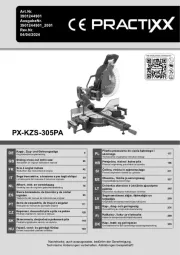
30 Juli 2025
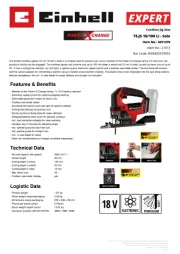
29 Juli 2025
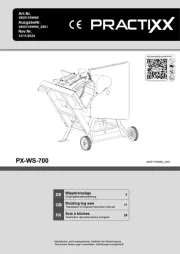
29 Juli 2025
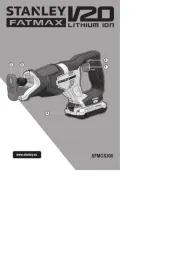
29 Juli 2025
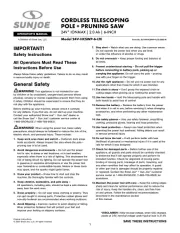
29 Juli 2025
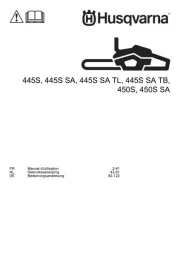
28 Juli 2025
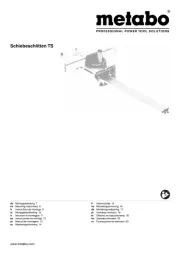
23 Juli 2025
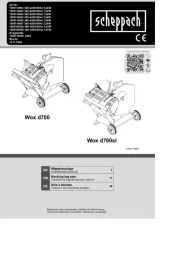
21 Juli 2025
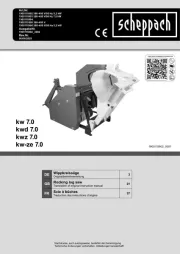
21 Juli 2025